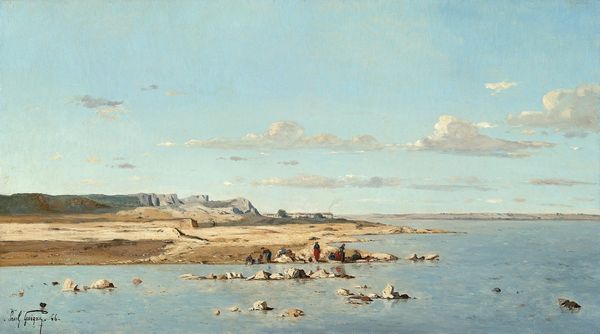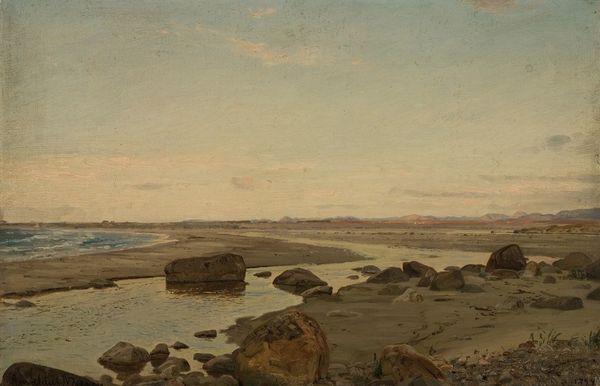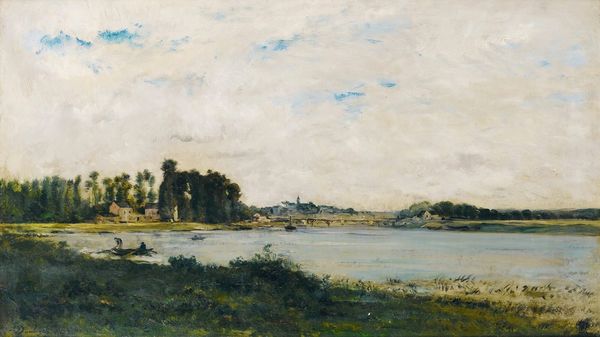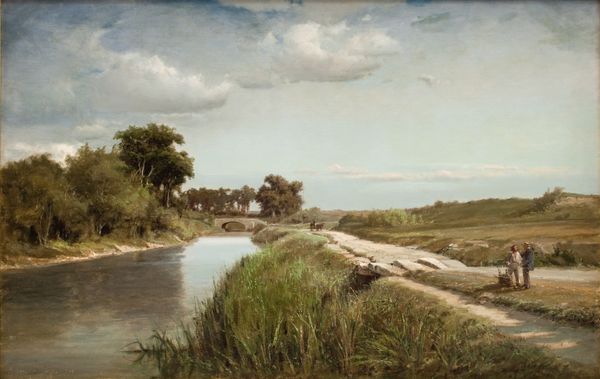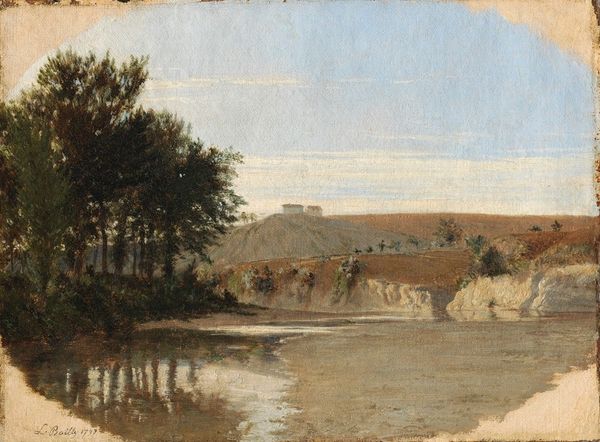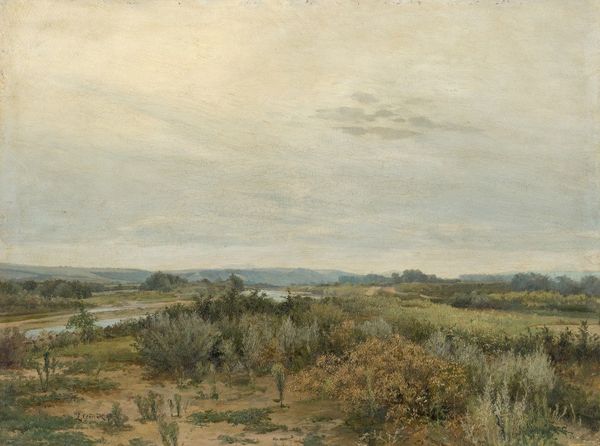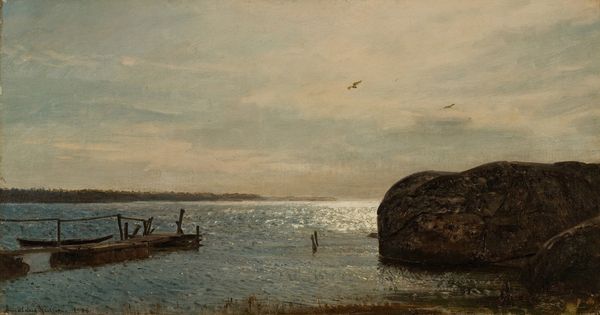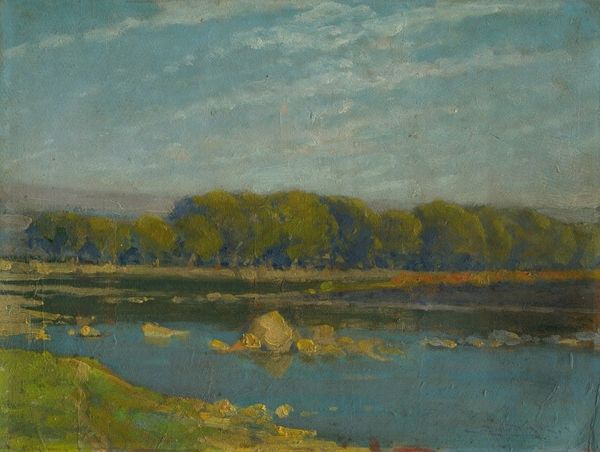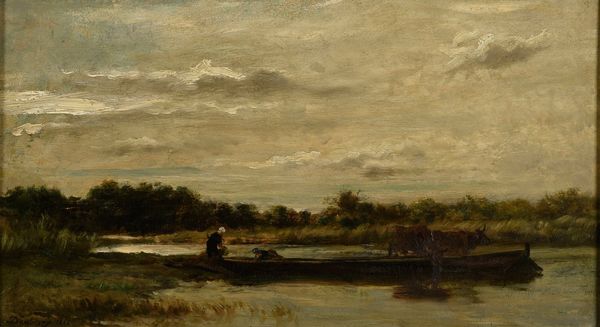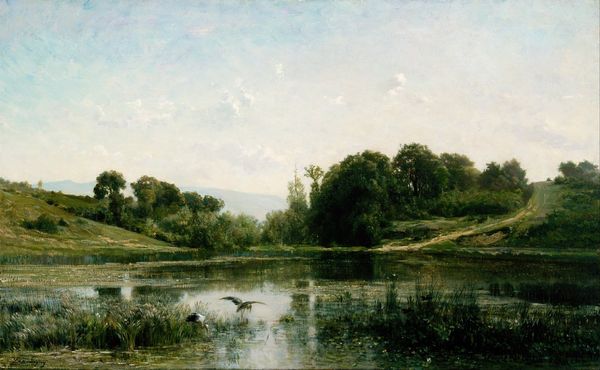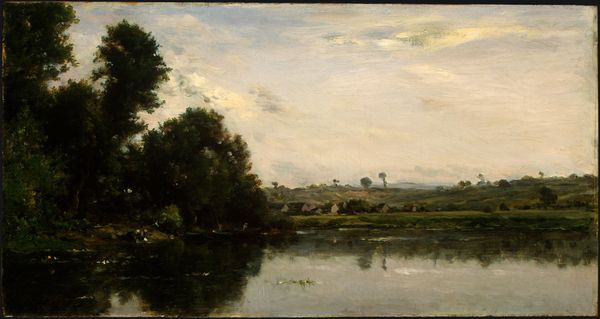
plein-air, oil-paint, oil-on-canvas
#
water colours
#
impressionism
#
plein-air
#
oil-paint
#
landscape
#
oil painting
#
oil-on-canvas
Dimensions: 24 1/2 × 58 1/4 in. (62 × 148 cm)
Copyright: Public Domain
Curator: This is "The Banks of the River Durance at Saint Paul," an oil-on-canvas landscape completed by Paul Camille Guigou in 1864. It now resides here at the Art Institute of Chicago. Editor: My immediate reaction is to the expansive, almost overwhelming, stillness of this scene. The muted colors and the horizontal composition give it a powerful sense of calm, though it does make me feel a bit solitary. Curator: That's an interesting read. Guigou was part of a shift, a new generation wrestling with academic traditions while reacting to evolving industrial development in the south of France. Landscape paintings weren’t just pretty pictures. They carried a powerful meaning of place and identity during moments of significant socio-political transformation. Editor: That makes me consider what identity this specific landscape might have carried. We see so much exposed earth – perhaps reflecting the tensions between resource exploitation and local attachment to the land? There is something stark about it; almost barren, maybe. Curator: Certainly. Look at Guigou’s technique. It's clear that he painted en plein-air. Considering that the area experienced considerable growth linked to resource extraction and development in the 1860s, the open expanses seem like an explicit act to address changes in perception of, and use of, the Durance and its valley at this particular moment. Editor: So the choice to emphasize the exposed earth isn't accidental, but rooted in the land's very real presence, charged as it was by cultural changes. Are there particular philosophical frameworks, we can think about here? Maybe concerning landscape as constructed idea rather than pure nature? Curator: Definitely! Consider post-structuralist thinking about how we conceive nature itself – not as a blank canvas but as layered with social meaning and power structures that have become historically visible here. Editor: It changes my whole perception! At first it felt somewhat emotionally subdued, almost bland, but realizing its engagement with socio-political layers… I find something resilient and thought-provoking about it. Curator: Absolutely, by engaging with social history we understand that what once seemed anodyne actually functions as subtle act of resistance.
Comments
No comments
Be the first to comment and join the conversation on the ultimate creative platform.
